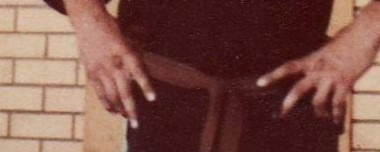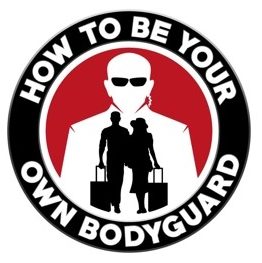ASSESSING BAD GUYS
SITUATIONAL AWARENESS
Assessing bad guys as potential threats is a huge part of situational awareness. Remember, situational awareness, in a nutshell, is “who’s around me and what are they doing?” Who can I dismiss out of hand as a non-threat, and who should I be concerned with as a potential threat? Obviously, this was also a big part of being both a bouncer and a close protection agent. I’ve got the time it takes a punter to get out of the cab and cross the sidewalk to know whether or not he’s likely to cause trouble or not. Similarly, in the protection field, I have fans coming into the backstage area to meet a client therefore, I have to be able to size them up fairly fast. Here are a few of the things you should be looking for.
PHYSICALITY
Physicality is a big one. Never forget the bigger they are, the harder they hit. I’m looking here for things like physical size, scars, demeanor, and/or body language. After that, do they have cauliflower ears? Probably a grappling background. A flattened nose and scarification around the eyes? A boxer. Over-sized calloused knuckles? Karateka perhaps. No scars on their face and lots on their fists. They hit a lot of people and don’t get hit much. Do they have a shaved patch on their forearm? That’s how guys who are around knives a lot like to test if they’re sharp.
DEMEANOR
Are they drunk, rowdy, or boisterous? Are they switched on or oblivious? Learn to recognize the effect of different drugs on people…some send people “out of it,” and others make them very dangerous. Are they on edge, looking around a lot, playing with their face? Those are all pre-attack cues.
Above all, get good at practicing physical descriptions because being able to describe someone will help law enforcement when you’re reporting a crime. You’re looking for how tall, how much they weighed, hair color, and other distinguishing features. Being a valuable witness is one of the best things you can be from a personal protection standpoint.

CLOTHING
When assessing bad guys, clothing tells us a lot about someone, including, but not limited to, gang affiliation, member of a martial arts school, military training, and socio-economic class. Also, are they dressed to fight? For instance, a guy standing around in a pair of dock shoes, Bermuda shorts, and a polo shirt is one thing. Someone wearing steel-toed work boots, heavy jeans, rigging belt is a different kettle of fish. I personally know guys who used to “dress up” to go out, which meant Dr. Martens, shin guards, athletic supporter, and a mouth guard in their pocket. By the same token, don’t you ever wear flip-flops or slip-on shoes because that’s about as stupid as you can get tactically?
How about 5-11 gear and/or fanny packs? Both scream that the guy’s carrying a firearm. The same goes for any such “tactical” gear.
JEWELRY
Jewelry is another part of assessing bad guys. Notice the big rings the bikers wear? They’re a legal way to rock a knuckle duster. How about the small gold boxing gloves around some guy’s neck? A lot of boxers wear them. What wrist is his watch on? He’s probably right-handed if he’s wearing it on his left arm. The left-handed typically wear theirs on the right arm.
WEAPONRY
The easy one to spot is the tactical folding knife clip in someone’s pocket. I’ve gone through courses where we learn to spot ankle holsters, Mexican carry, and hiding places for weapons and signals that someone puts off that they’re carrying illegally or concealing something they shouldn’t.
From the book “How To Be Your Own Bodyguard“
TATTOOS
Tattoos are another thing to be aware of. A karate organization in Australia all have dragons tattooed on them when they reach black belts. Tattoos can tell you about gang affiliation. A teardrop tat on the eye can mean the wearer killed someone in certain cultures. It can mean they did prison time in another. The Russian mafia and MS13 both have specific tattoos to let you know which gang they’re part of. A lot of military guys will have unit-specific markings as well. Get the idea?

